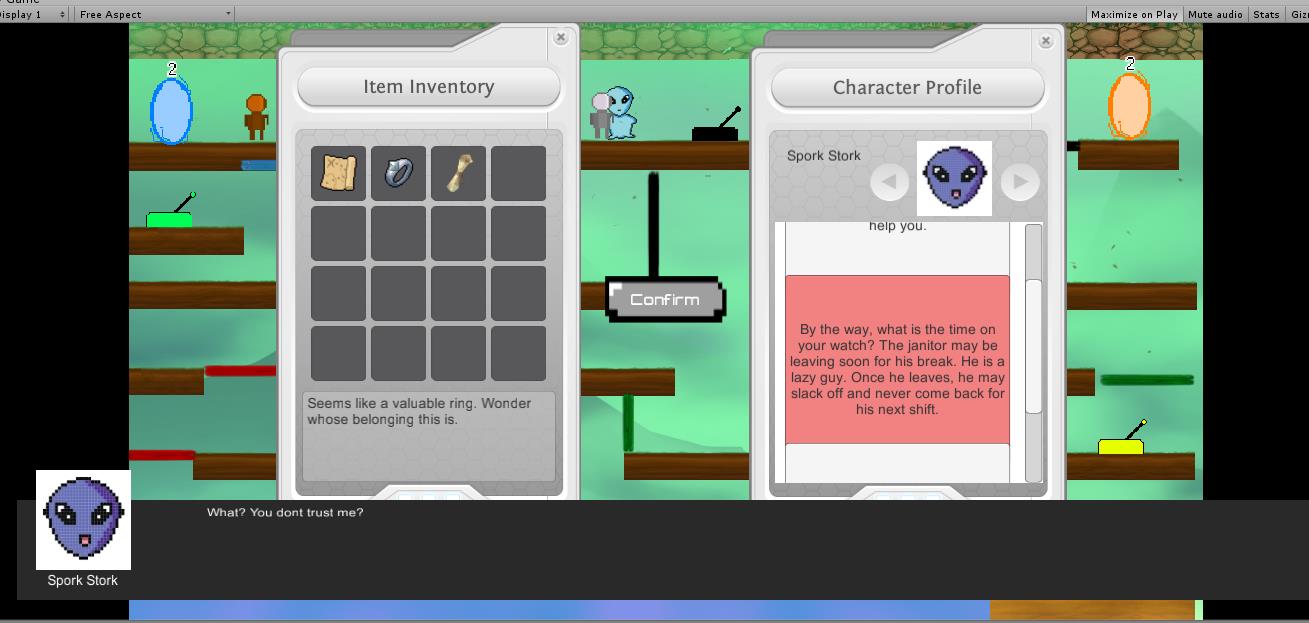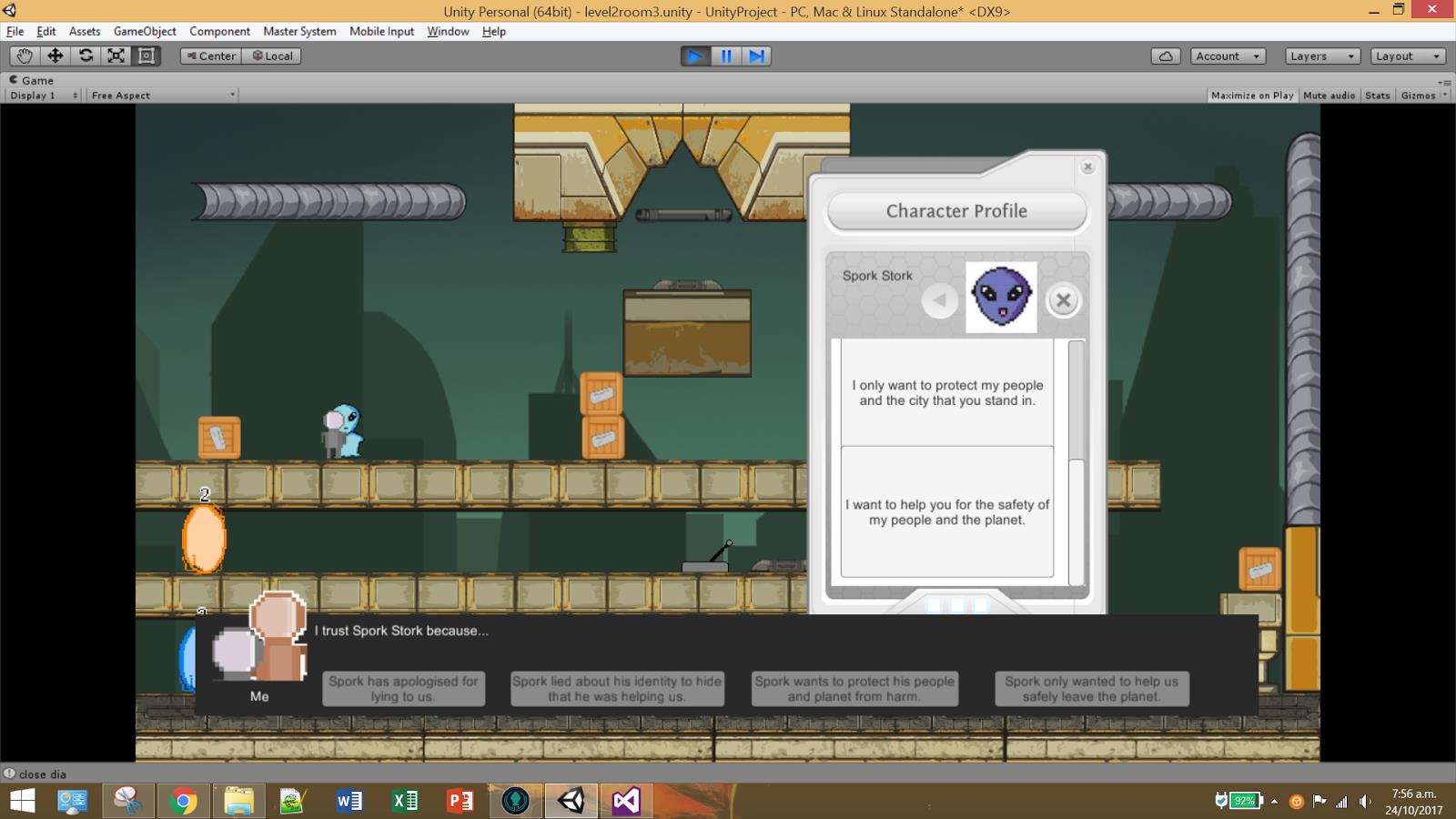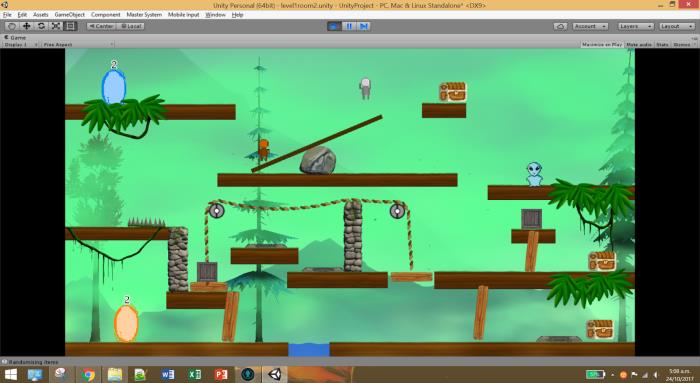-
Notifications
You must be signed in to change notification settings - Fork 3
Deep Mapping Between Game and Critical Thinking
Item inventory, character profile and reappearing level elements
Item inventory and character profile store information about collected items and conversation with NPCs. The same level elements have different mechanics in different levels, with surrounding implications to convey that the same elements behave differently.
Players can therefore recall information about items, revise previous conversations and recognise previous game elements, to reflect on learned information upon receiving new information/entering a new environment. Players can then compare and contrast information, and evaluate new information’s credibility. Reflective thinking makes the players think critically by enforcing players to form memory links and analyse connections between statements and events. By evaluating their past experience and the corresponding results, players can achieve a more valid/reliable understanding of newly received information.
All NPC statements in the game are of uncertain credibility, i.e. players need to decide themselves whether to believe them or not, and make corresponding decisions. On the other hand, items have descriptions that are certain to be true. Item inventory and character profile store a history of all important statements and collected items, which the players can use to reflect on past information and evaluate credibility of NPC statements. For example, the following screenshot shows an item that is collected in level1room2, being used in level1room3, to recognise fallacies in NPC statements:

Another example of reflective thinking is the use of water element with different behaviours. In level 1, water is deadly to humans and the players must travel across without contact with the toxic liquid. As shown below:

However, in the second level, an animal is in the water to show the players that the water is safe to go in and they must consider what actions they must take to understand the different properties a level could contain. Players learn that water is deadly early in the game. In level 2, they see a turtle swimming in the water. Players must apply a level of reflective thinking and scepticism and conclude that since an animal doesn’t die in the water, players won’t die.

Item inventory, character profile and game dialogues
Based on what the players already know about the NPCs or the game world. Using the above mentioned inventory and character profile, players can form their own opinions towards each NPC, and shall apply a level of scepticism to what that NPC says in the future.
For example, in level2room3, the players are presented with a series of statements. By looking at their previous statements and behaviours, e.g. lying to the players, the players get to judge who they would like to trust more and the reason why:

There are also dialogues within levels that remind players of what previously happened in a level. In the following screenshot it says “He just lied to me in the forest. I do not know if I can trust what he says." Reminding the players of the event and encourage players to critically evaluate the NPCs credibility.


Mechanism of choosing the correct pair between item and statement
The statements or arguments presented by NPCs might contain fallacies or may not be valid. The players must evaluate information/arguments to establish their logical validity or soundness and identifying fallacies, and use this to influence their next steps.
Players pick up a letter addressed to the coordinator of the area, then come across an NPC that gives various statements. Players need to identify whether there are contradictions contained in the statements, given that the item descriptions are definitely valid. In this example, the fallacy resides in the owner of the letter. The letter description specifies the true owner’s name, e.g. Cahn Tofu. The NPC’s statement of it being the coordinator of the area, must be false as its name does not correspond to the name in the letter. Player needs to conduct this logical thinking to choose the correct option (shown below) and successfully continue with the game.

Multiple other similar puzzles appear throughout the game. As only one item would contract with the statement, critical thinking is encouraged by giving the players multiple items, some of which present irrelevant information to confuse players. If the players do not follow a logical chain of thought, but only identify “keywords” that match in the statements, they will not reach the correct solution. I.e. if an NPC mentions a “device”, a “device” item appears on the scene, but does not have any direct proof of the NPC’s credibility.
Mechanism of choosing the correct pair between item and statement Collaboration between players to get pass obstacles
The levels are constructed so that the players must collaborate and plan ahead in order to reach the exit. Levels are designed in a way that require players to perform actions in specific orders and think ahead when using mechanisms that require two players. Players must consider the result of their actions problem solve to pass a level.
Flipping a seesaw to access a platform that has an item. They must push the box onto the seesaw to keep it tilted so they can access the platform again later.


Game Overview and Required Features Selection
Mapping Critical Thinking to Game Aspects
Prototype Team Development Log